Free download: Top 10 Natural & Easy Remedies for Joint Pain from Home. Learn these helpful remedies.
Estimated Reading Time: 12 minutes read
There are some varying opinions about activities that should be avoided immediately after a total knee replacement.
While general guidelines have been given and supported by research, many times recommendations will vary depending on the individual surgeon and patient.
A total knee replacement surgery can have a very challenging recovery process. Usually once you’re stable, your surgeon will want you to start moving right away with the help of a physical therapist. This may even happen the day of surgery!
Initiating movement and knee range of motion is vital for a successful recovery.
While it’s important to begin the rehab process immediately after your knee surgery and to know what to expect with this, it’s also important to know that there are some activities and exercises you should avoid immediately after a new knee replacement in order to optimize a full recovery.
Table of Contents
What is the New Knee Joint Made Out of?
It’s not a bad idea to understand what the new artificial knee is made from.
According to the American Academy of Orthopaedic Surgeons, an artificial knee is made from “metal alloys, ceramic material, and strong plastic parts.”
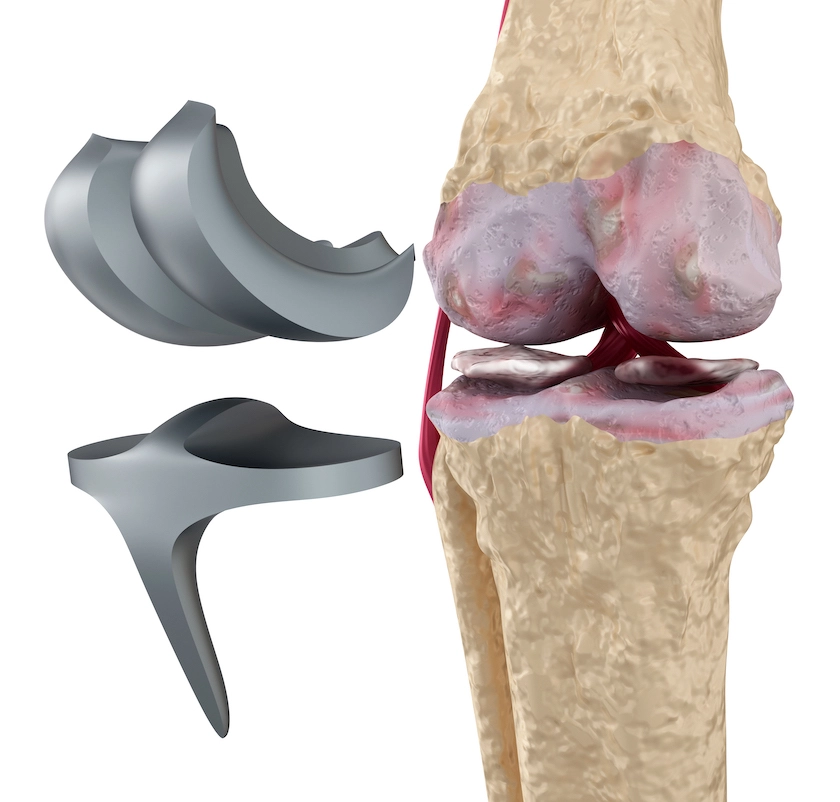
The areas that are normally involved in knee replacements include the bottom end of the femur on the thigh, the top end of the tibia or shin, and the back of the patella or knee cap.
The metal parts have a plastic spacer between them to improve preservation of the joint and promote good joint mobility.
The artificial components can be connected via three options:
- Cement (bone cement)
- Cementless (relies on natural bone growth to fixate the joint)
- Hybrid (combination of cement and cementless)
Your orthopedic surgeon will decide which option is best to fixate the knee joint.
Phases of Physical Therapy
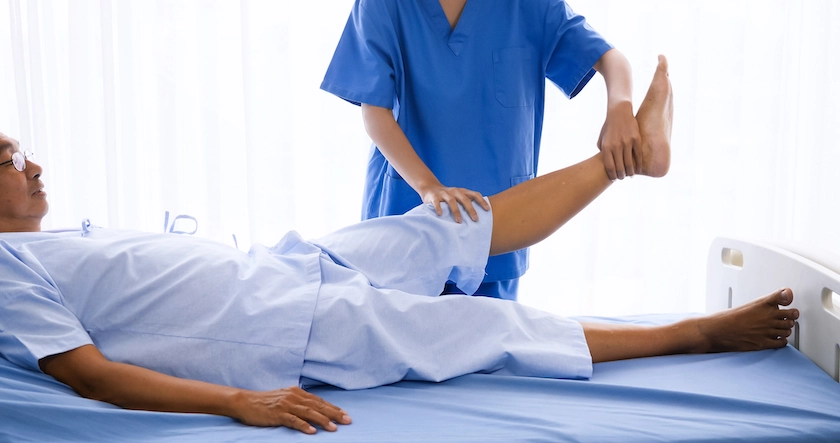
So now that you’ve had your knee replacement surgery, what comes next in the healing process?
It’s time to start moving!
Rehabilitation services are always ordered after a new knee replacement.
Physical therapy will normally begin right away and continue in each phase of the recovery process.
This will include the acute inpatient phase while you’re still in the hospital, the home health care phase while you’re adjusting back to home life, and the outpatient phase to really push the progress of the new knee.
Acute Inpatient Physical Therapy
The knee replacement recovery process begins while you’re still in the hospital!
Once your vitals are stable and any effects from the anesthesia have worn off, it’s time to get up and get moving.
your first steps
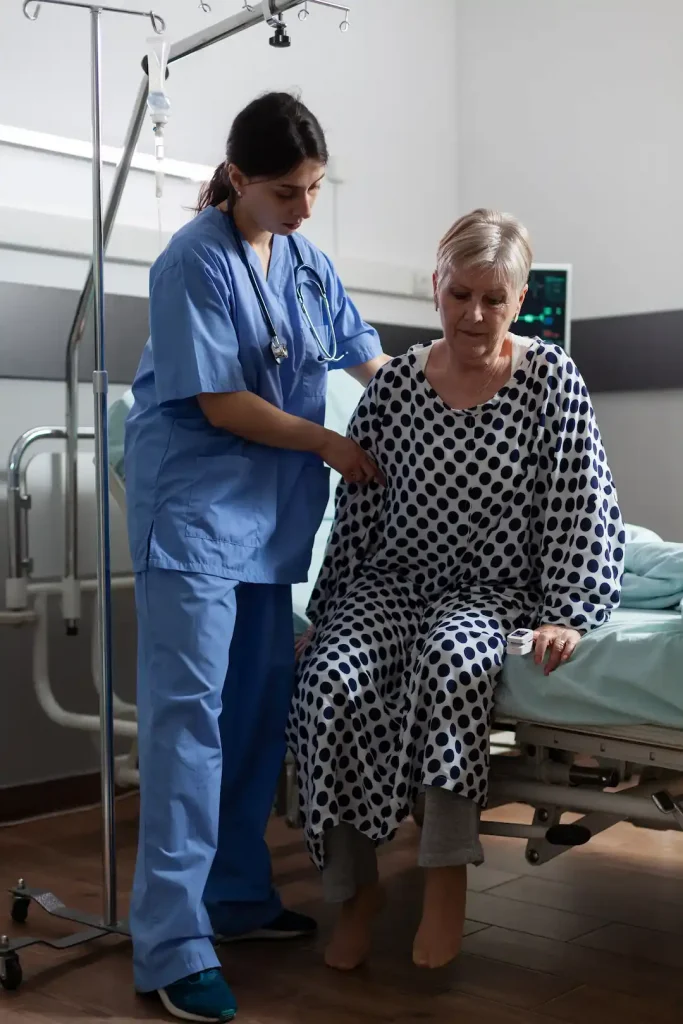
Your physical therapist will guide you as you stand for the first time and take your first steps.
It’s crucial to listen to the instructions given by your physical therapist as caution must be taken when you begin walking on the new knee.
the nerve block

Typically, the nerve block given for the surgery will not have worn off completely yet. While this nerve block is a great help for early pain management after knee replacement surgery, depending on which nerve block is used, your knee may very likely try to buckle on you when you put weight on it.
This is most common with a femoral nerve block, as this nerve innervates your quads, which prevents knee buckling when it’s working properly.
There’s no need to worry though, because your physical therapist is aware of this and is trained to guard and assist you so that no falls occur.
putting weight on the new knee

You normally will not have weight bearing restrictions as you begin walking in the hospital. It’s common to see hospital instructions for weight bearing as tolerated.
You actual want to put as much weight as you can tolerate on the surgery side to encourage as much of a normal gait pattern and promote as much initial healing of the knee as possible.
using an assistive device
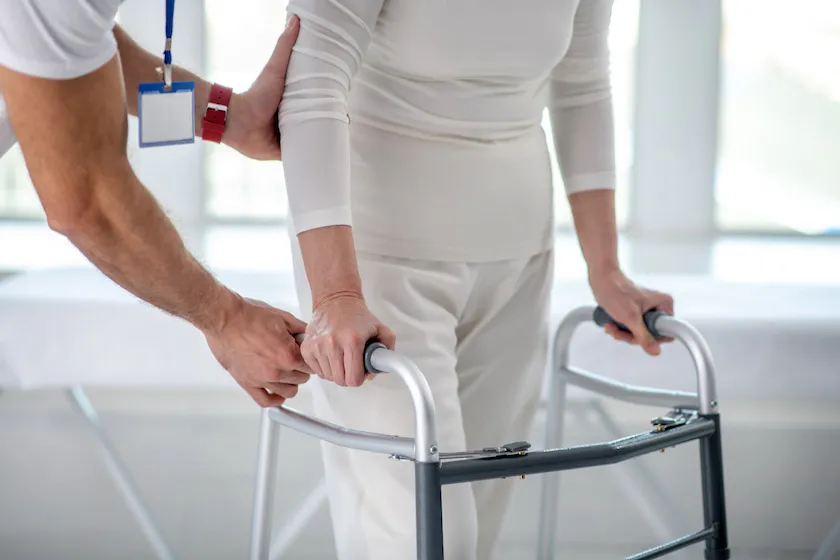
You’ll usually begin with using an assistive device, such as a rolling walker, with your initial steps. The rolling walker will likely be discharged home with you for continued use too.
It’s important not to rush eliminating use of the walker as this can cause more pain and may put too much stress and too much weight on the new knee before it’s ready for it.
exercises in the hospital
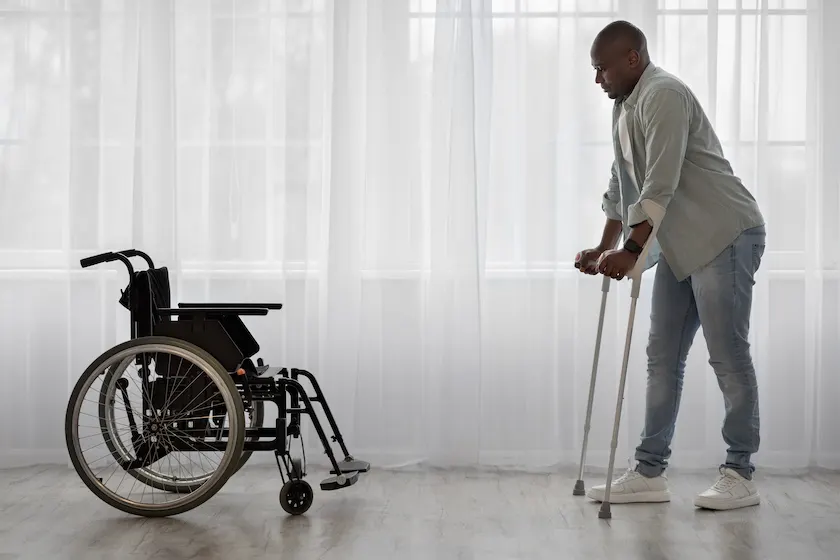
The physical therapist may also initiate some simple exercises while in the hospital to get the knee joint moving and encourage proper circulation to avoid blood clots.
This will include range of motion to bend and straighten the knee joint mostly.
heading home
Once you’ve been cleared by rehabilitation services for a safe return home, you’ll begin the next phase of rehab.
Home Health Care Physical Therapy
A home health care physical therapist will help in continuing the rehab process at home.
1. home safety inspection
They will do a home safety check to ensure there are no tripping hazards or anything in place that could potentially cause you to fall.
They will check your basic mobility at home, which may include the following:
- Moving in and out of bed independently
- Transferring up and down from a seated surface (you may need an elevated toilet seat)
- Transferring over a tub or shower floor (a rubber mat to avoid slipping may be used)
- Walking between rooms
- Practicing stairs or steps if you have any at home
2. Continued exercise and mobility training
In this phase of recovery after the knee replacement, you will continue progressing your knee exercises. This will help promote continued knee function and mobility.
You may be able to advance from a walker to a cane in this phase also. The physical therapist will make recommendations if this is appropriate or not.
Home health care physical therapy may last for approximately 2-3 weeks after surgery before you move on to the next phase of rehab.
Outpatient Physical Therapy
You’ve made it to the outpatient phase!
You will probably begin this phase of rehab about 3-4 weeks after surgery. Sometimes, depending on your surgeon’s preference, you could even begin sooner.
Since the timeline is further out from your surgery compared to the other phases of rehab, and more time for healing has occurred, it’s important to really push yourself in the outpatient phase.
The artificial joint isn’t a delicate structure. It’s actually very strong. You have to keep moving it and pushing your progress.
1. Exercise and activity progression
Outpatient physical therapy will progress your exercises and activity level both in the clinic and at home in your home program.
The important thing to remember is yes to push yourself, but only the amount you know your body can handle. While pain is to be expected, it absolutely MUST be tolerable.
Don’t be surprised if you’re in outpatient physical therapy for several weeks after surgery to achieve the most optimal outcome.
2. Physical Therapy Graduation
Once your physical therapist has determined the knee replacement is functioning in a functional range, you have full and functional strength of the surgical leg, pain is well managed, and you demonstrate safe, independent mobility, you will be discharged home to continue with your home program independently.
Now, just because you’ve made it to the point of not needing regular physical therapy anymore doesn’t mean your recovery process is over. Far from it!
Most agree that your first year out from your knee replacement surgery will be a time of recovery. You just won’t necessarily need physical therapy for that whole time frame.
That’s why compliance with your home program that your physical therapist recommends is absolutely crucial.
Your home program will of course include specific exercises to practice but will also include activities and exercises to avoid.
Activities and Knee Replacement Exercises to Avoid

While movement and exercise are essential for the healing process, there are some activities and exercises you should avoid doing within your first year of recovery or until cleared by your surgeon to resume doing.
It’s generally agreed that low impact versus high impact activities and sports are preferred.
The biggest concerns are making sure that you avoid putting too much stress or strain on the artificial joint and avoid putting yourself in a position where you could fall or injure yourself.
1. Running

If you’re a runner, being told not to run after a knee replacement is definitely not ideal. The worry with running is the repetitive high impact force on the artificial knee, which could cause the knee to wear down faster and not last as long as it should.
Most will probably advise against running altogether after having a knee replacement; however, if you discuss your goal and desire with your surgeon to eventually return to running, they can make appropriate recommendations.
Taking appropriate measures, such as wearing the right shoes and trying to avoid uneven ground, are factors that should be considered.
2. Jumping

Similar to running, the high impact force from any jumping motion is not the most ideal after a knee replacement.
It would be preferable to practice more low impact activities. This may include the following options:
- Walking
- Pool exercise or swimming
- Biking
- Resistance training (preference of lower weights or resistance initially versus higher weights)
3. Kneeling

You’ll find that kneeling can be pretty uncomfortable if you try it out too soon after a knee replacement.
You definitely should not try to kneel immediately after surgery while the incision is healing. Once the incision has healed, you may find that your range of motion is not far enough along to allow kneeling in the first place.
Once you have the range of motion, the next concern is will you have the leg strength to safely kneel to and from the floor. It’s harder than you’d think!
Additionally, attempting kneeling on a firm surface especially can be very uncomfortable.
You’ll eventually be able to kneel again, after all this is a very basic functional task, but all in due time.
4. Contact Sports
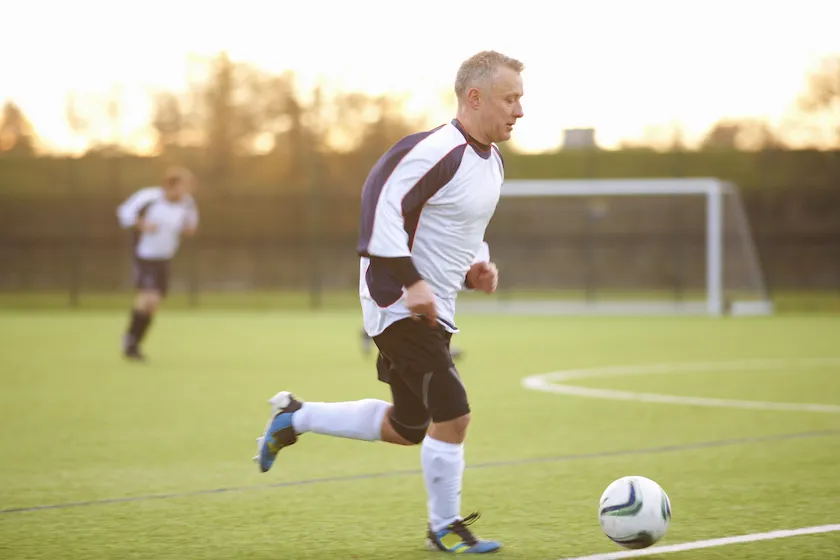
If you’re an athlete and play contact sports, it’s best to discuss with your surgeon if and when you’ll be able to do this again.
You should also discuss your goals for return to sport with your physical therapist, so that they can gear your exercises and home program towards this after the knee replacement.
Contact sports, such as football, hockey, soccer and basketball, are concerning for many of the same reasons already listed.
You want to avoid sports or situations where too much stress is being placed on the knee, which could cause more wear and tear on the joint, or if there’s a higher chance of injuring it.
5. Prolonged Bending of the New Knee
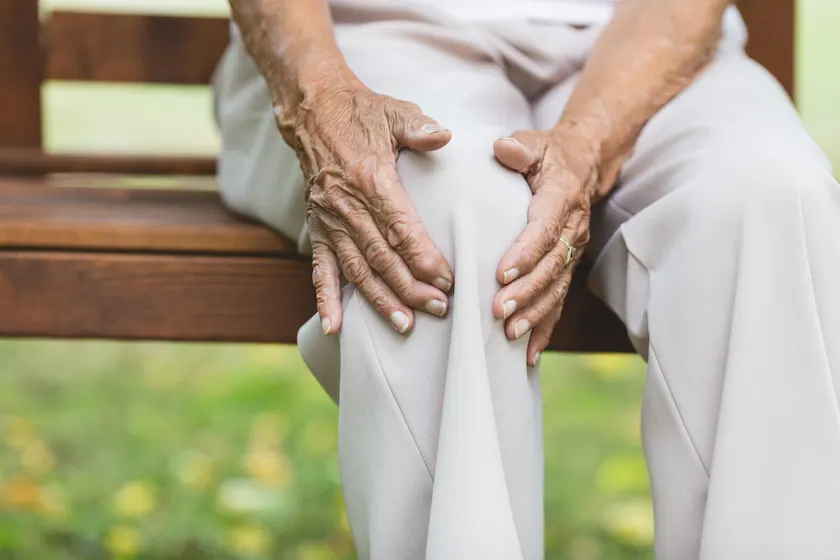
The knee is a joint that is most likely to become stiff, or in more severe cases contracture, if kept in a prolonged bent position.
Range of motion and proper knee positioning is essential after surgery. While one of the main goals is to achieve maximal knee flexion range of motion, you still want to avoid keeping the knee bent for an extended time.
This may include the following activities or positions:
- Sitting for too long, especially long car rides
- Sleeping with the knee in a bent or flexed position all night, such as on your side
- FAQ: an object propped under the back of the knee directly for support
- Instead, consider using full support under the entire surgical leg versus behind the back of the knee directly.
Final Conclusions
A total knee replacement surgery is quite intense, and the recovery process can be grueling, but it can be done!
Knee replacements are happening more often due to severe knee arthritis and associated pain. Due to how common it has become to have a knee replaced and the goal of getting you back to your prior level of function, the relationship and communication between you and your surgeon and rehab team is vital.
Be sure to communicate your concerns and goals with them, but also make sure you listen to their professional advice. This will allow for the most successful recovery.
FAQ:
Can I hurt my artificial knee?
The components that make up an artificial knee are pretty tough. While it would take a lot to damage these components, the knee shouldn’t be considered invincible.
This is why caution is taken to avoid any activity that could cause stress or wear on the joint or could place you at risk for a fall or injury.
What’s the best position to sleep in after a knee replacement?
Do your best to avoid sleeping with the knee in a bent position all night, as this will cause it to become very stiff and can make it difficult to straighten when you wake up.
Try sleeping on your back with the surgical leg fully supported and slightly elevated. Avoid putting something directly under the knee. You could consider placing a couple of sleeping pillows vertically under the entire leg.
When can I stop using ice?
Ice is your best friend after the surgery! You’ll typically still need ice even months after surgery. This will help with pain management, swelling, and soreness as you return to your previous activities.
Make sure to ice for about 15-20 minutes at a time if using a regular ice pack, and then take at least a half hour break to avoid over-icing, as this could negatively affect the skin and/or circulation.
Many surgeons and hospitals now have special ice packs they may give you after surgery. They’ll instruct you how long you’re able to use these for.


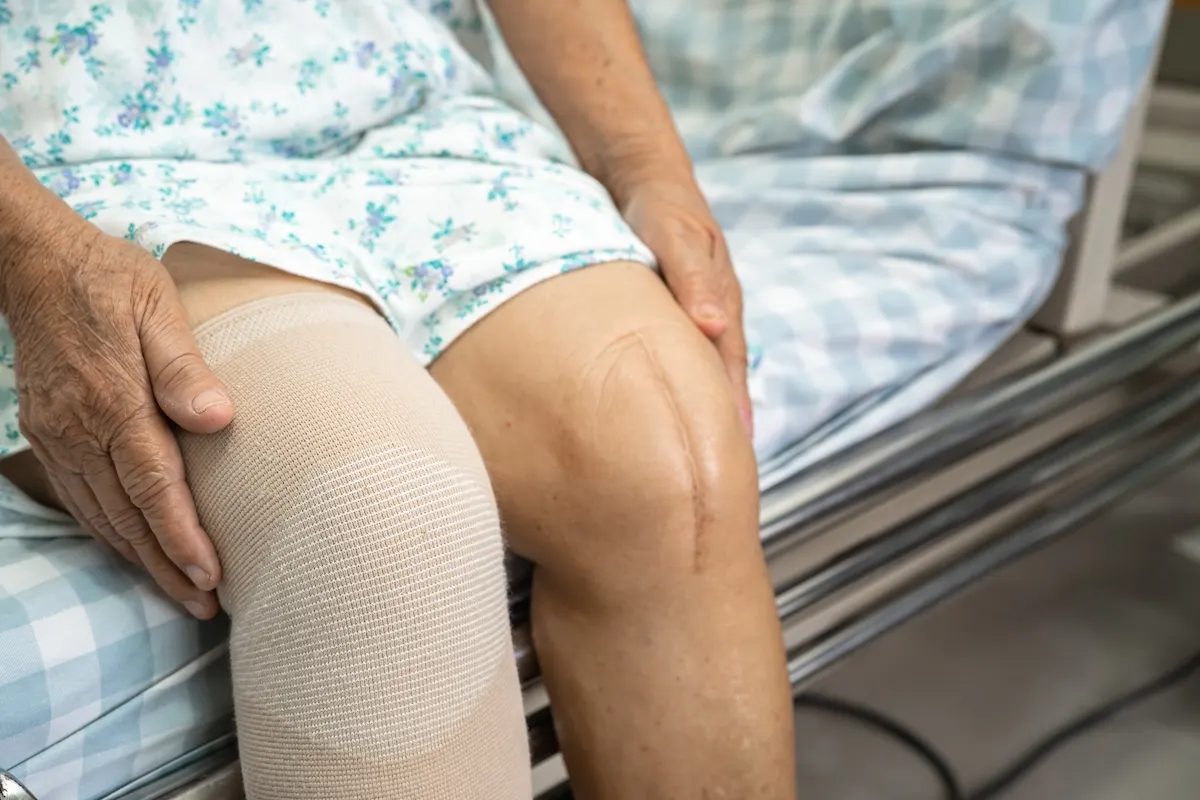







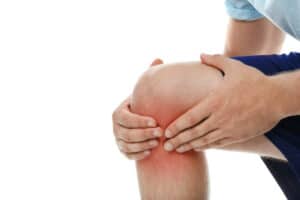
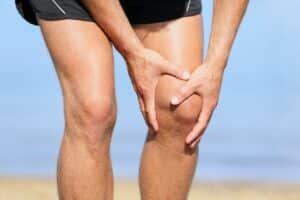
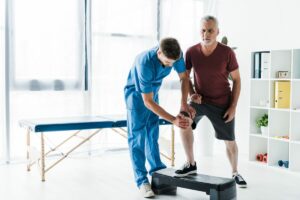

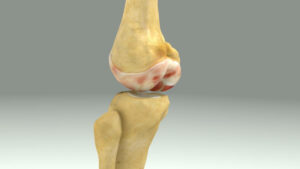

3 Responses
I have had one knee replacement and am scheduled for the other knee in February 2023.
Your advisements are "right one" and I will follow them and my therapist instructions. Thank goodness for home therapy and more rigid therapy to follow.
Good luck, Ron. I hope the home therapy is helpful!